Small is Beautiful But Endangered
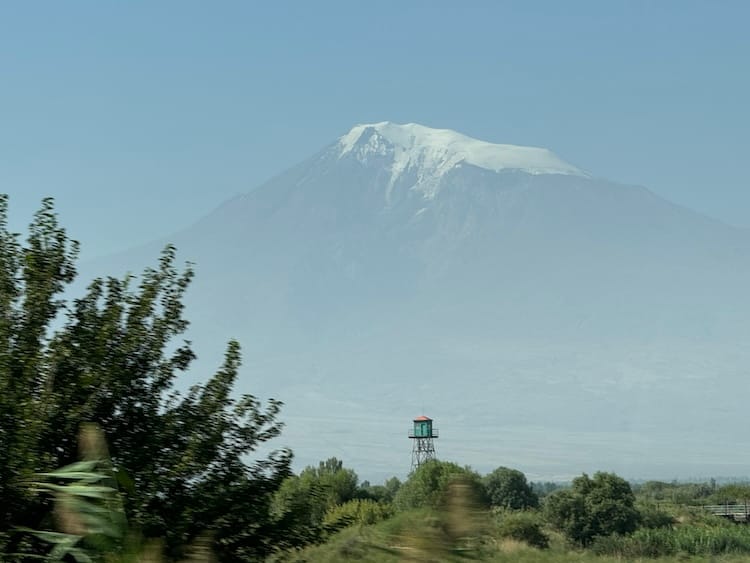
Friday, 13 September
If anyone tries to tell you that size matters, send him to Armenia.
I have just returned from a five-day trip there to celebrate the 15-year anniversary of my husband David’s foundation The Caucasus Nature Fund (CNF). The country is slightly larger than southwest England, slightly smaller than the region of Normandy and about the same size as the state of Maryland. With a population of just over 3 million, it has fewer people than any of the above-mentioned localities.
But what an abundance of history, nature and culture, of human generosity.
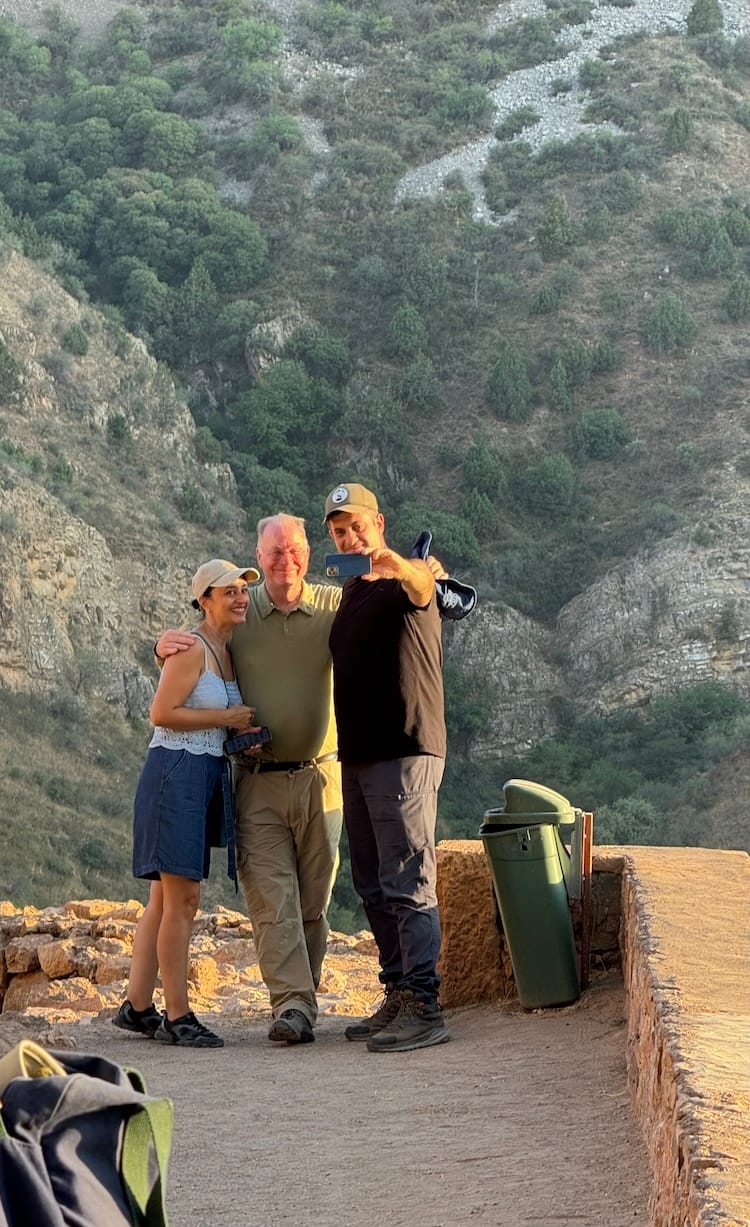
Its history stretches back a long way. Crude stone tools from one million years ago have been found on the highlands. In the Areni-1 Birds' Cave, which we visited, the world's oldest leather shoe (c 3500 BCE) was unearthed in 2011, along with baskets, clothes remnants and clay vessels. Armenia contests its northern neighbour Georgia's claim to being the earliest wine producer (an "our amphorae are older than yours" spat). There is no doubt, however, that Armenia became the first country to adopt Christianity as the state religion in 301 AD, a full 12 years before Constantine, and it has 4000 monasteries and churches to prove it. Some have been left to the elements…
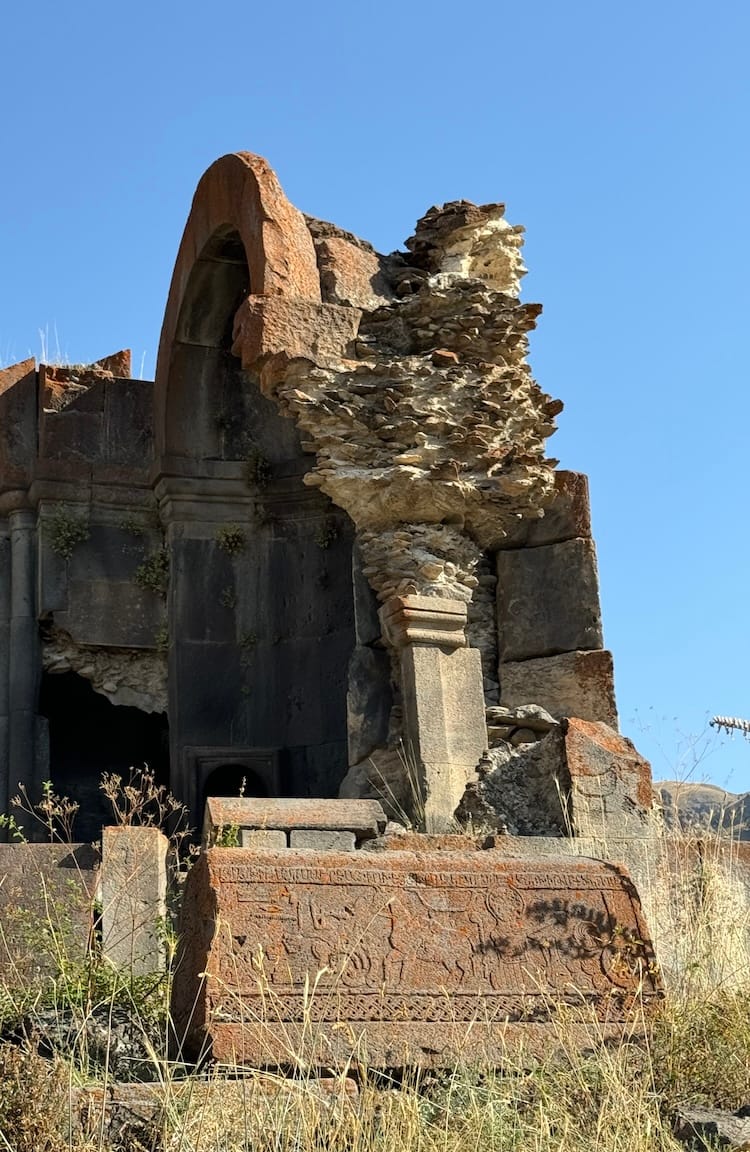
…while others have been renovated, often with the help of the large and loyal Armenian diaspora (more on that later)…
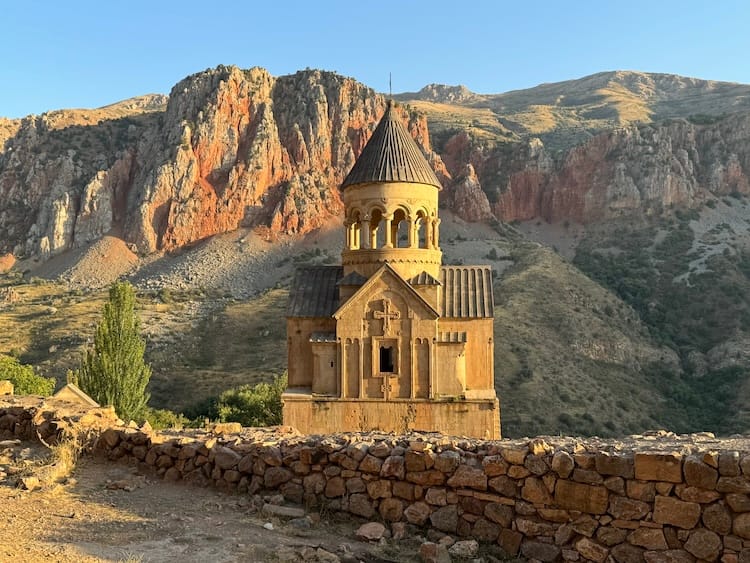
Theirs is a history of loss. Strategically located at the crossroads of Asia and Europe, the much larger area of Greater Armenia was invaded by just about every empire you can imagine, including Greeks, Romans, Persians and Mongols, causing its borders to shift, amoebae-like, over time.
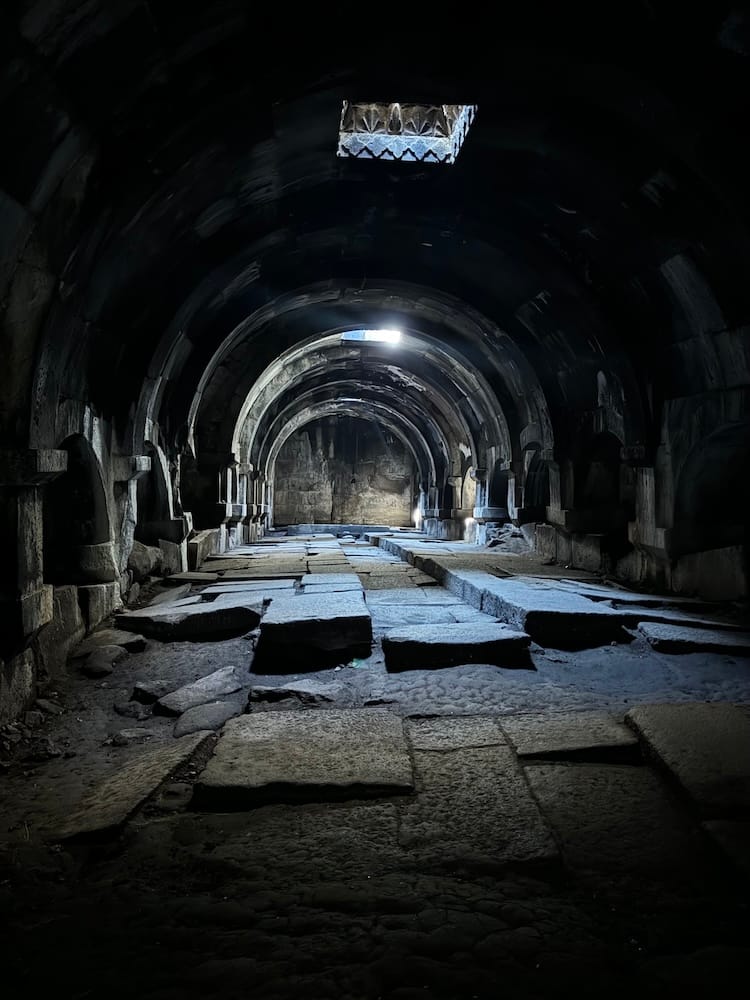
Between the 16th and 19th centuries, the territory was disputed by the Persians and the Ottomans, with the latter finally prevailing. After a long period of relative tolerance, friction between Muslim and Christian turned nasty, eventually resulting in the 1915 genocide that left 1-1.5 million Armenians dead.
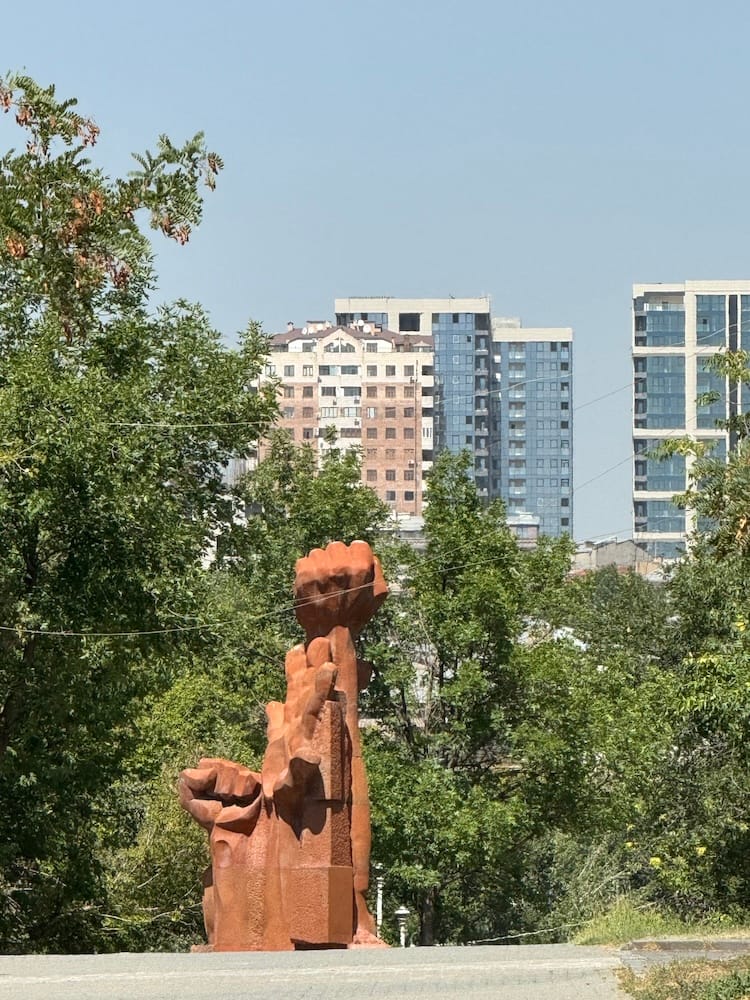
Enter the Russians. Along with Georgia and Azerbaijan, the country was annexed by the budding USSR in 1920 and in the process deprived of half its territory, including the national symbol. Mount Ararat (top photo and below), on which Noah's ark is said to have landed, may now stand on Turkish soil, but it still dominates Armenia's western landscape and presides over its people's soul.
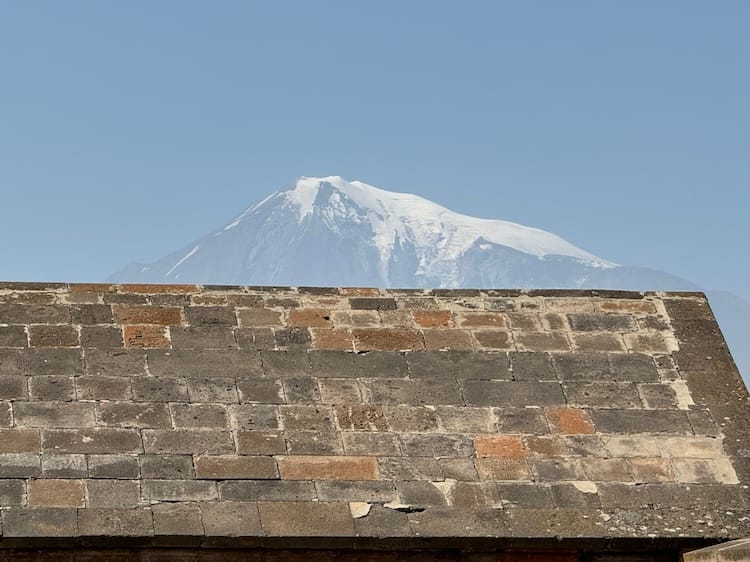
Today Armenia is a land-locked country tightly bound by Georgia, Iran, Turkey and Azerbaijan, with an ongoing territorial dispute in Nagorno-Karabakh, the largely Armenian exclave in which there have been periodic wars with Azerbaijan since the 1990s. Last year, while the usually still protective Russians were otherwise occupied, the Azeris choked off the area, then launched an offensive that has brought 100,000 refugees across the border. The Armenians now fear that the emboldened, oil-rich Azeris will go further and bulldoze a corridor through their southern tip, thus linking them to their own exclave Nakhchivan. Or that they'll just try to snip Armenia's tail off altogether.
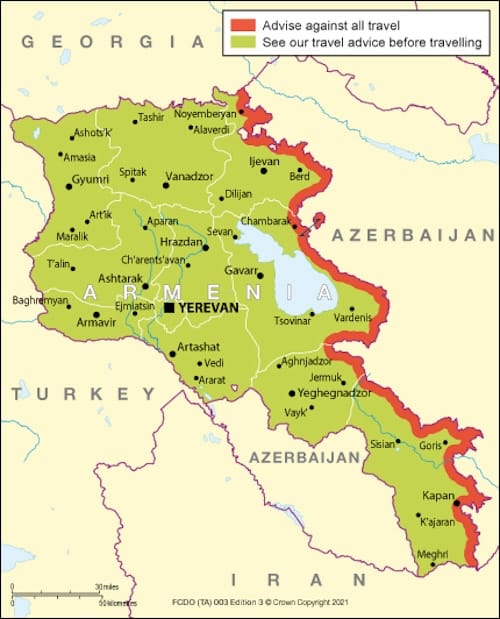
On the first day of my trip, I walked up and down and all around the capital Yerevan, a hilly city of volcanic stone with fountains, flâneurs...
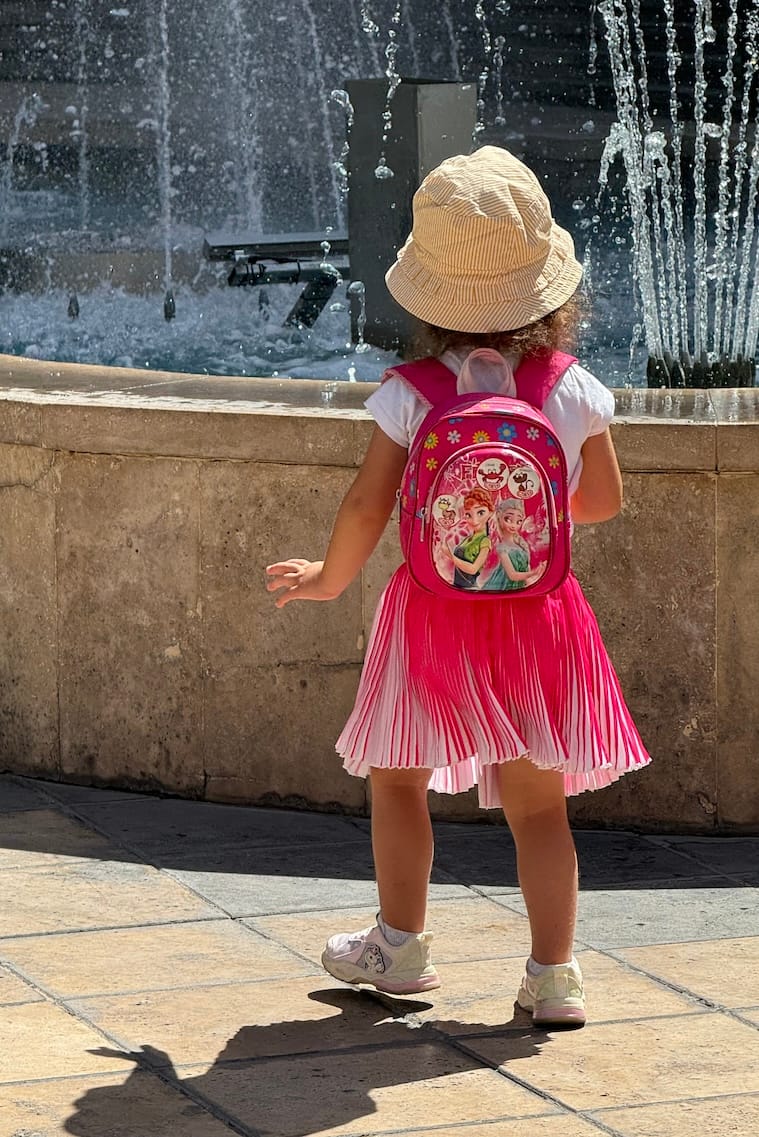
...and flowers, often accompanied by stone statues (I have never seen so many outside the Louvre)...
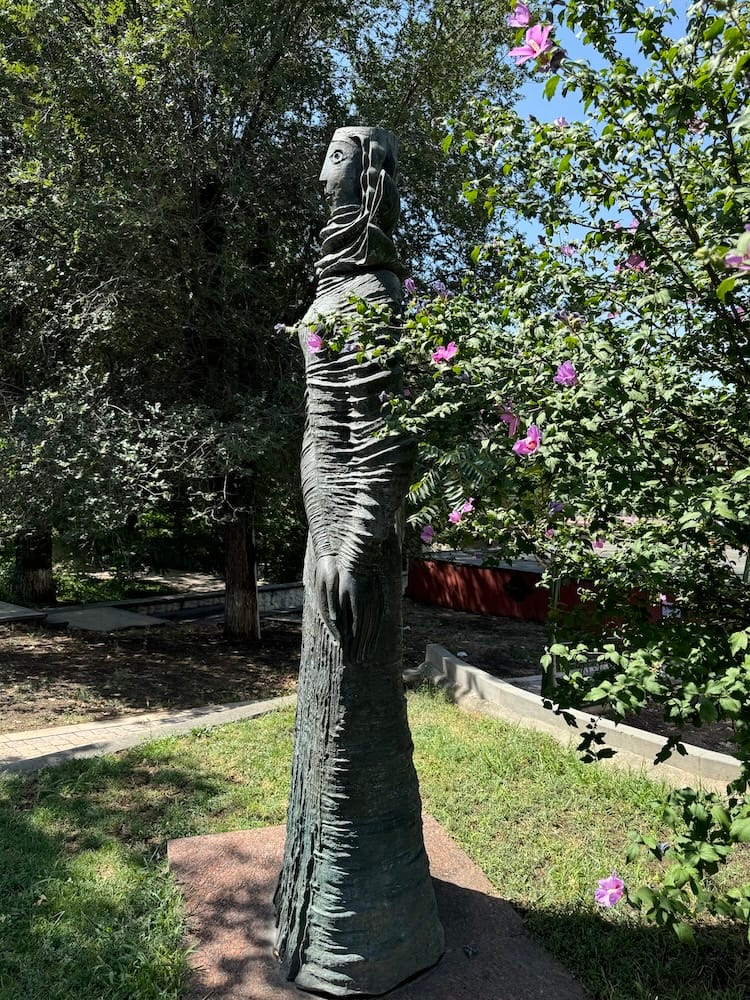
Everywhere the push and pull of old and new...
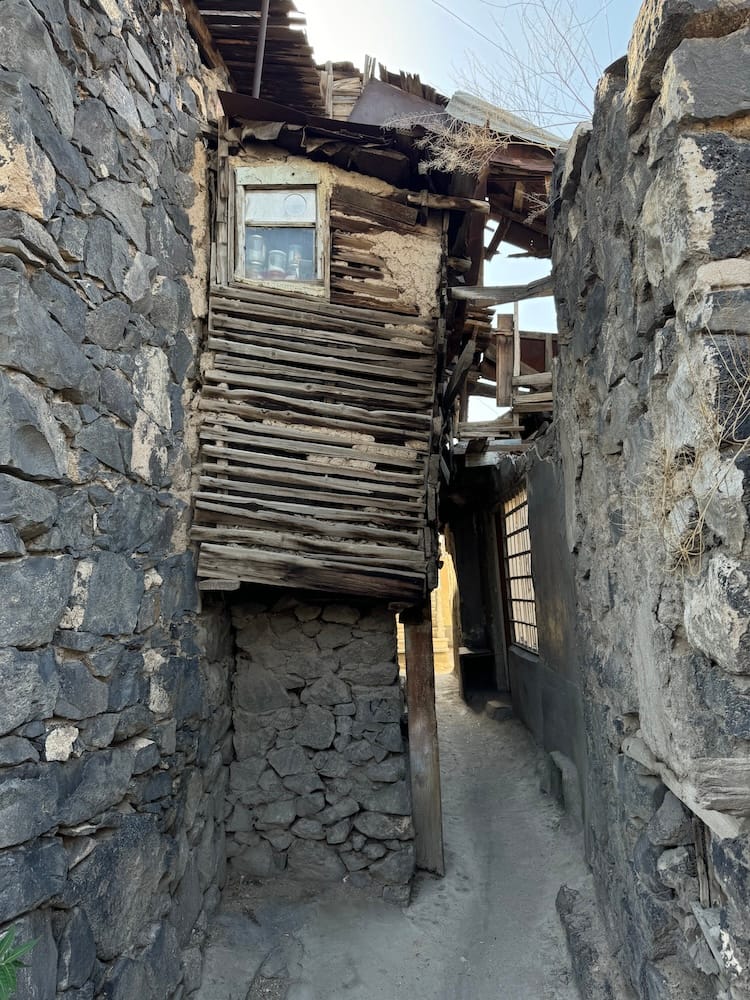

...of tradition...
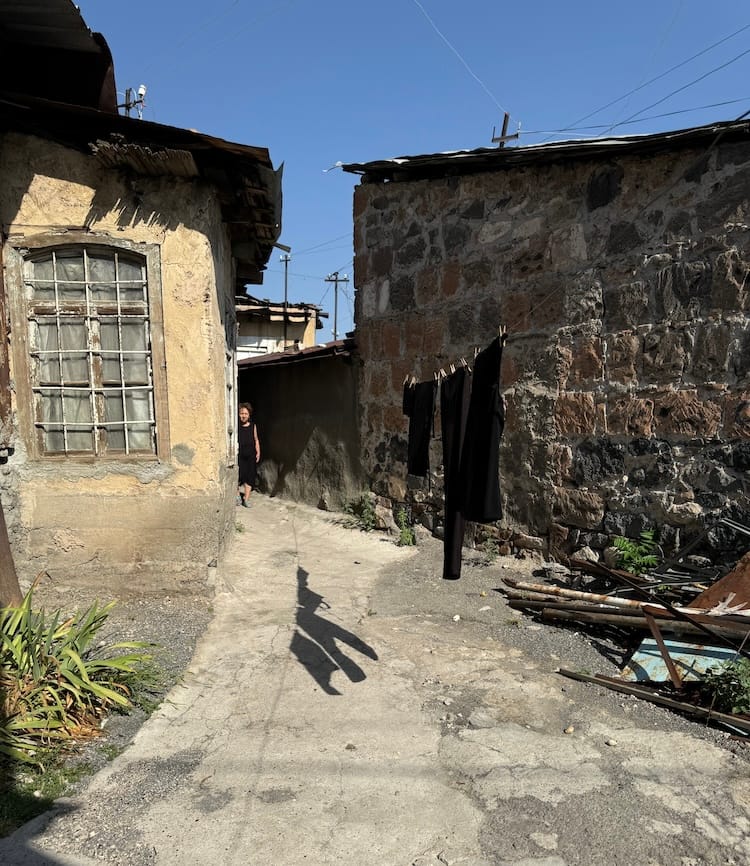
...and modernity...

...rub shoulders.
Armenian traders have always sought fortune abroad, but the genocide and the Soviets accelerated a diaspora that today numbers 10 million (the second largest Armenian city after Yerevan is Los Angeles). Since the country gained independence in 1991, they have poured money into their spiritual homeland, building roads and hotels (like the Tufenkian, above), renovating monasteries or finishing projects left undone by the Soviets.

What I saw in Yerevan was echoed in the central and northeastern parts of the country that we visited over the next four days. On the Ararat plain were the vestiges of Soviet times, when Armenia was used by the Russians as an industrial zone...

...but we also visited a recent CNF project to restore wetlands for migrating birds...
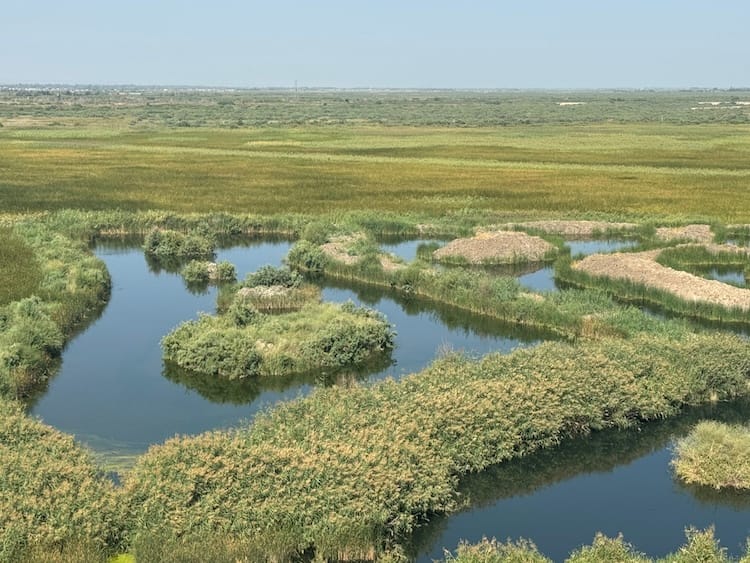
You can imagine this plain completely flooded, with Noah's ark bobbing towards dry land on the face of Mount Ararat.
There are flowers everywhere...
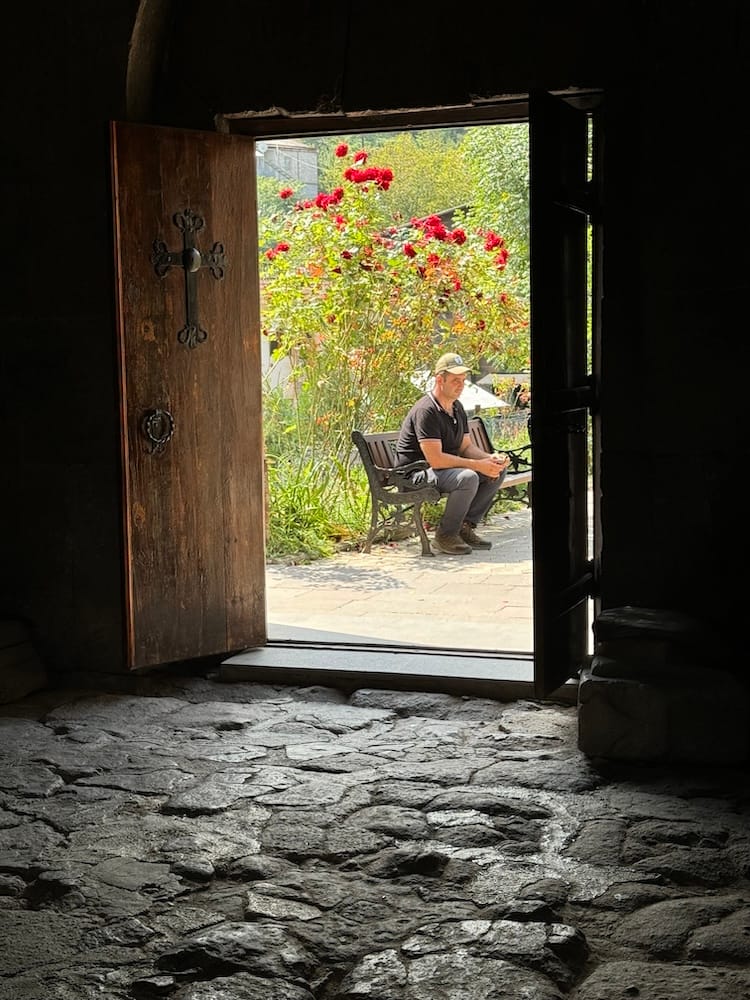
...and you understand better the attachment to public statuary in Yerevan when you've learned about the tradition of khachkars, or carved cross stones, that decorate churches and cemeteries.
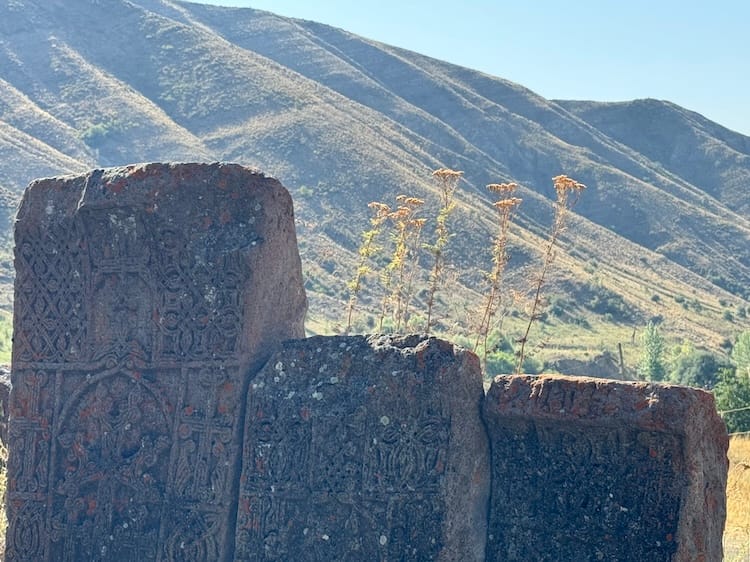
Then there's the exquisite nature. As the CNF site tells you, the area comprising Armenia, Georgia and Azerbaijan is "one of the most biologically rich and culturally diverse regions on Earth...with over 1,650 indigenous plants and animals and tremendously varied landscapes from semi-desert to high tundra to lush forests." All of which is threatened, as Arman V, the director of the Armenian office repeatedly told us, by "the most dangerous species on earth, the two-legged one."
We visited the dynamic, community-run Arpa Protected Landscape...
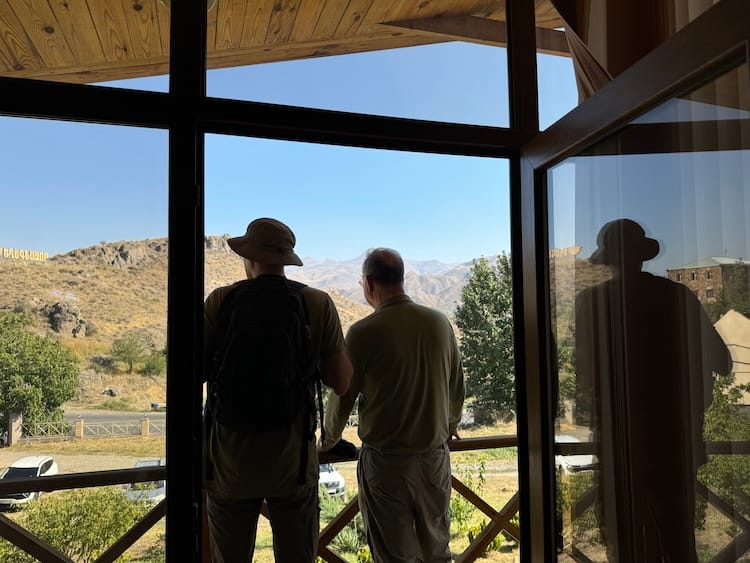
...where at dawn and dusk on the mountain peaks we saw (through a telescope so I can't show you) Bezoar goats, an endangered species whose numbers are increasing thanks to conservation efforts.
After driving across an arid, treeless landscape - along the Silk Road, over the Orbelian pass and around the Lake Sevan - we entered a tunnel and three kilometres later emerged, like a dream, into the thick oak and beech forests of the Dilijan National Park.
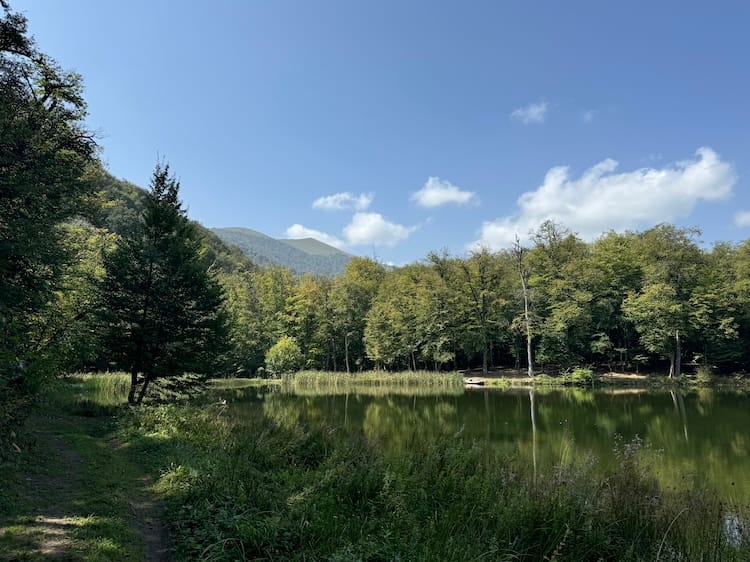
There we had a couple of invigorating hikes, one to the above pristine Lake Gosh, the other up and down the mountainside above the town of Dilijan.
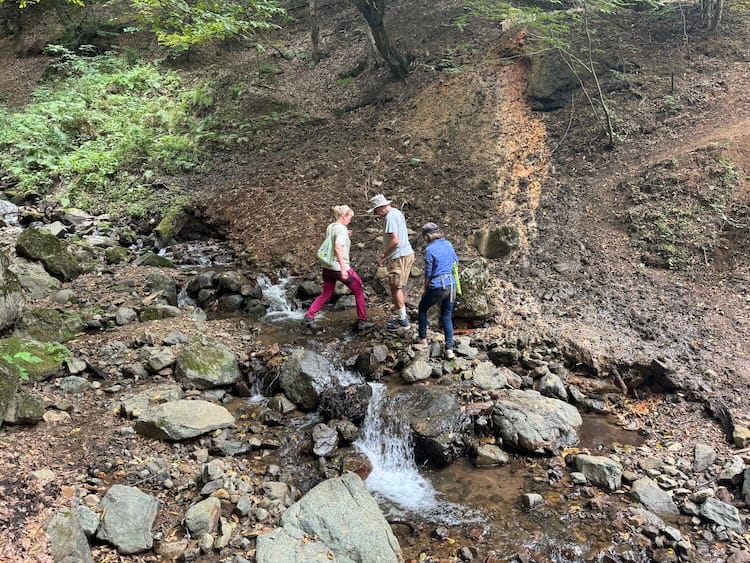
The parts of the country I visited have a real buzz to them. We ate one delicious meal after another, drank that storied wine by the bottle and stayed in stylish hotels.
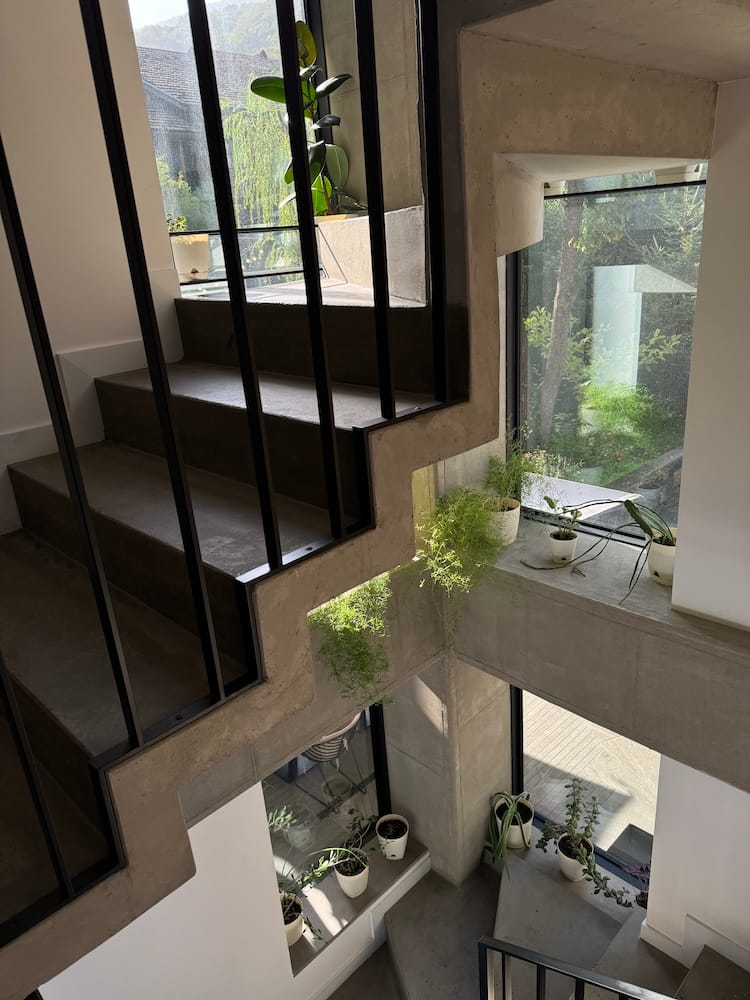
The people we met were kind, energetic and forward-looking.
But no matter where you go, you cannot escape the Soviet legacy...

...anymore than you can forget the geopolitical cloud and the prospect of more lost land that hangs over the country.
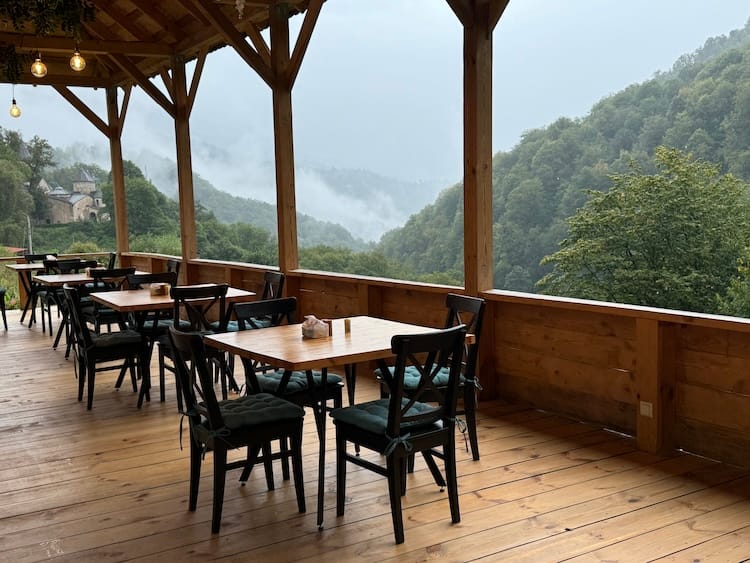
I came home with my spirit enriched by so much beauty and my heart tender with admiration for Armenian resilience in a world where too much of the time bigger is still considered better.
Thank you Arman V, Arman A and Marine K for this inspiring trip.
_______________________
You can visit my website here and follow me on Instagram here